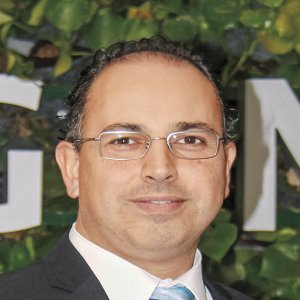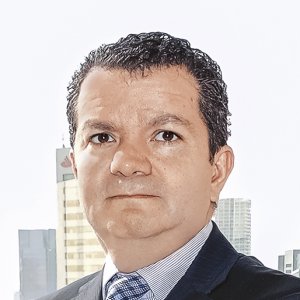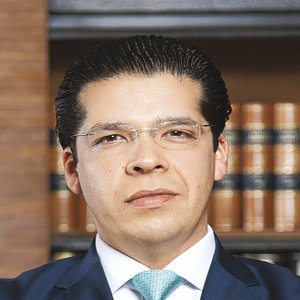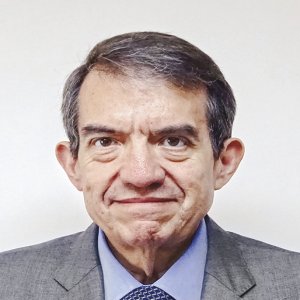Simplified Processes for Greater Growth

STORY INLINE POST
Q: How does Gas Natural Fenosa make the most of its global footprint in the Mexican natural gas market?
A: 2018 will mark Gas Natural Fenosa’s 175th year in business. Throughout its lifespan, the company has grown based on its natural gas distribution business. As we underwent acquisition, incorporations and global market entries, Gas Natural Fenosa considerably diversified its business lines. To date, our company has consolidated four main business branches: gas distribution networks, electricity distribution networks, natural gas commercialization and electricity generation, with our clients at the center of it all, as our primary, downstream focus. This is our global model, which we can deploy either in its entirety for some countries such as Spain while in others, the number of business branches we develop depends on market conditions
In Mexico’s case, electricity distribution is still primarily in government hands. Gas Natural Fenosa entered the Mexican downstream gas distribution market in 1997 when it opened to private initiative, winning successive distribution zone tenders and fostering our growth. We incorporated electricity generation in 2001 through PPA projects with CFE. In 2014, we integrated renewables into our portfolio and the Energy Reform unlocked the possibility of launching our natural gas commercialization branch, effectively deploying all four of our business lines.
Q: Why did Gas Natural Fenosa choose green bonds to finance its renewable energy portfolio?
A: Gas Natural Fenosa issued its first green bond in November 2017 on an international scale as part of its strategy to diversify its financing portfolio. In Spain, we were awarded some bids throughout 2017 in renewable energy, enabling us to conclude this issuance with resounding success. These additional funds will be exclusively allocated to the renewable energy projects we won.
Q: How is Gas Natural Fenosa capitalizing on its tenure and expertise applied to renewable energy projects?
A: Through our client-based focus, we dedicate ourselves to supplying our 25 million clients worldwide the best combination of energy costs, energy supply security and an environmentally-friendly portfolio as a final business strategy. Competition in the renewables business, not only in wind power but also solar, is increasingly aggressive, making these sources mandatory to inject added competitiveness into our power generation portfolio these last few years. It is a general trend observable not only with Gas Natural Fenosa but also among other integrated players involved in the same business as ours.
Q: What new business opportunities unlocked by the reform is Gas Natural Fenosa planning to take advantage of?
A: Our priority remains focusing on the growth of our core business in natural gas distribution. CRE’s last public tender prior to the Energy Reform for natural gas distribution zones in Sonora and Sinaloa was awarded to us, in 2014 and 2015. We want to grow in parallel to these zones. The reform’s new rules and sector growth priorities have simplified the process considerably. Competitive and public tenders are no longer required to grow. We have requested permits to expand in Campeche, Yucatan, Quintana Roo and Tabasco. We are already permit-holders for the latter. This simplification process fosters a considerable boost for Mexico’s downstream natural gas distribution sector and is in line with one of the core objectives of the reform, which is magnifying natural gas and renewable use in Mexico.
Q: What is your assessment of the potential of Vehicular Natural Gas (VNG) applications in Mexico?
A: Vehicular natural gas is a complement; a new use for natural gas within our distribution network business. Gas Natural Fenosa has been present in this new subsector since 2004 with two vehicular natural gas service stations in Monterrey. Prior to the reform, developing this particular application was especially complex as all service stations were owned by PEMEX and the business was not liberalized. Now, the potential for vehicular natural gas is on the rise and enjoys renewed interest from private players. In our case, we are particularly interested in participating not as service station operators, but rather as natural gas network promoters for either private or public entrepreneurs with the intention of installing service stations and connecting them to our network and to provide our natural gas commercialization services. We believe this particular business venture has a bright future based on two main drivers: the positive environmental impact from the use of natural gas and this fuel source’s cost-competitiveness compared to other fuels; and second, VNG represents savings well over 50 percent. We expect it will become a generalized fuel service, particularly for public and merchant transportation.
Q: What main drivers are fostering Gas Natural Fenosa’s interest to expand toward the country’s tourism zones?
A: The southeastern part of the country has varying levels of natural gas transportation infrastructure, both from CENAGAS and private players, which we can use for our transportation service. Some isolated portions of that territory are absent of pipelines and have no connections, which is what we do. We can also provide our expertise in gasifying cities via Compressed Natural Gas (CNG) pipes, which is the opportunity that these zones in Mexico offer. The consumption levels in the commercial sector, particularly tourism-related infrastructure, are attractive for us, potentially providing tremendous benefits not only in economic savings but also in increased energy efficiency. Gas Natural Fenosa’s innovative energy solutions include a significant efficient-consumption component in large-scale electric installations, such as hotels and hospitals.
Q: What new technological developments are you looking to showcase in Mexico?
A: The natural gas distribution and commercialization business has been around for quite some time in various parts of the world. Technological developments and innovations are rather focused on supply service security. Events such as the Sept. 19 earthquake in Mexico justify the importance of this particular component. In the aftermath of this event, 99.7 percent of our 503,438 clients in Mexico City could count on an uninterrupted, leak-free and seamless service whereas other supply services such as electricity experienced several days of interruption. Energy efficiency is the other primary component to which we allocate the development of innovative products and services.
Q: What milestones are you expecting to achieve in 2018?
A: Pertaining to natural gas distribution, we would like to initiate operations in all the states in which we have launched permit-holder processes: Sonora, Sinaloa, Tabasco, Campeche, Yucatan and Quintana Roo. Our innovation and energy solutions business continues to grow, doubling every year since 2014, and we want to maintain this upward trend in the future. We also secured an important wind farm project for our renewables portfolio, which we would like to complement with an additional solar asset for 2018. After 20 years of continued presence, Gas Natural Fenosa is comfortable in Mexico thanks to the quality, consistency and seriousness of the sector’s regulator. In this fundamental moment of overture, which is always complicated, we must say that Mexico’s authorities — the Ministry of Energy, CRE, CENAGAS and CENACE — need to be commended for their excellent work. Opening an entire market and implementing all the inherent regulatory changes in only three years is possibly a world record.























